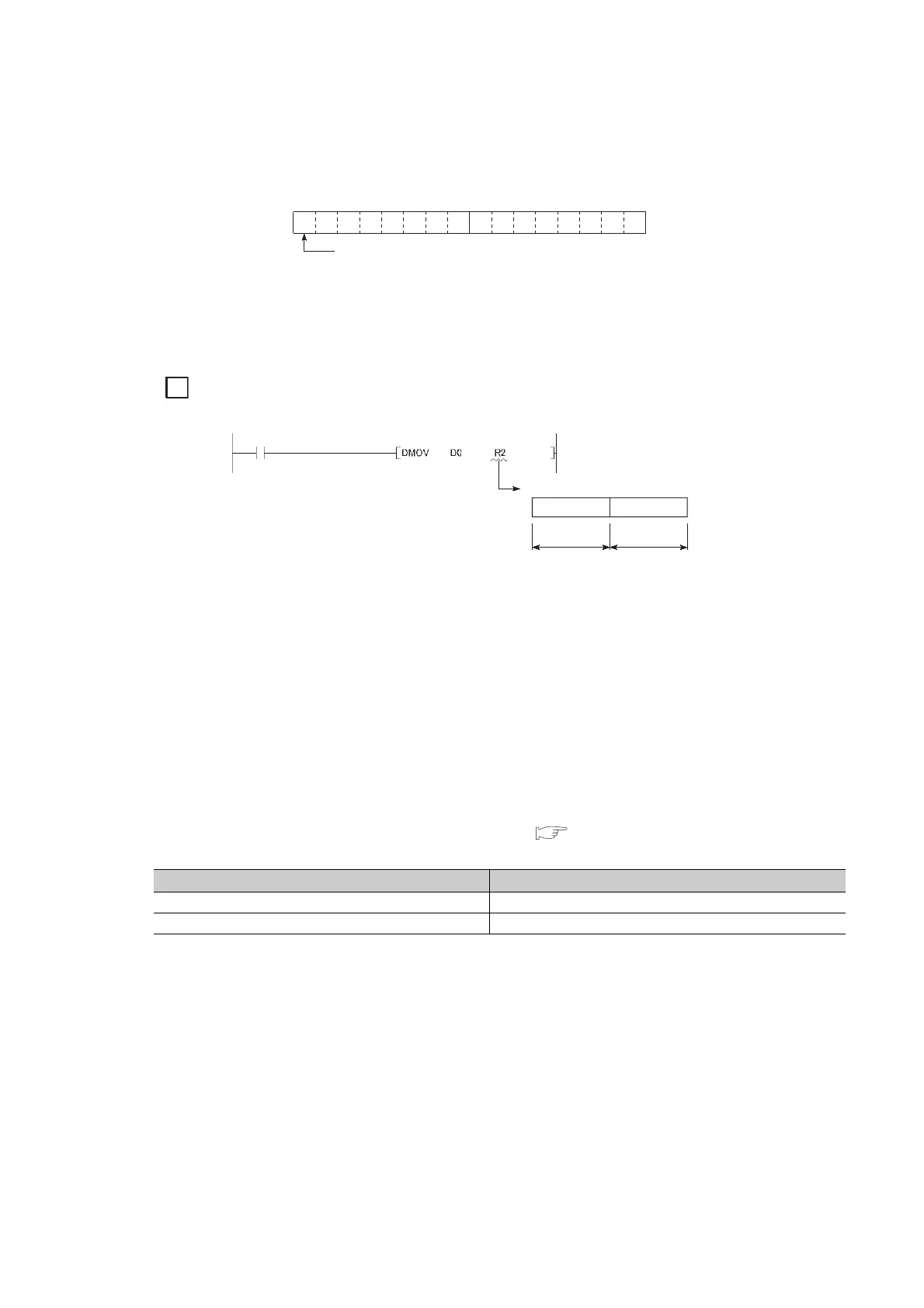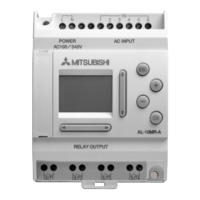260
(2) Bit structure of the file register
One point of the file register consists of 16 bits, and data can be read or written in units of 16 bits.
(3) When using a 32-bit instruction
The processing target is R
n
and R
n+1
. The lower 16 bits corresponds to the file register number (R
n
) specified in
the program, and the higher 16 bits corresponds to the specified file register number + 1.
When R2 is specified in the DMOV instruction, R2 represents the lower 16 bits and R3 represents the
higher 16 bits.
Data of -2147483648 to 2147483647 or 00000000
H
to FFFFFFFF
H
can be stored in a two-point area of the file
register. (The most significant bit in a 32-bit structure is a sign bit.)
(4) File register data registration
The standard RAM is available as a memory media for storing file register data.
(5) File register size
The standard RAM can store the data up to the following size. Note that, however, if the standard RAM is used
other than as the file register, available points are decreased. ( Page 30, Section 2.1)
CPU module Points
L02CPU 64K
L26CPU-BT 384K
Rn
b15
to
b0
The most significant bit represents a sign bit.
Ex.
Ex.
R3
Lower 16 bits Upper 16 bits
R2
Processing target: R2, R3

